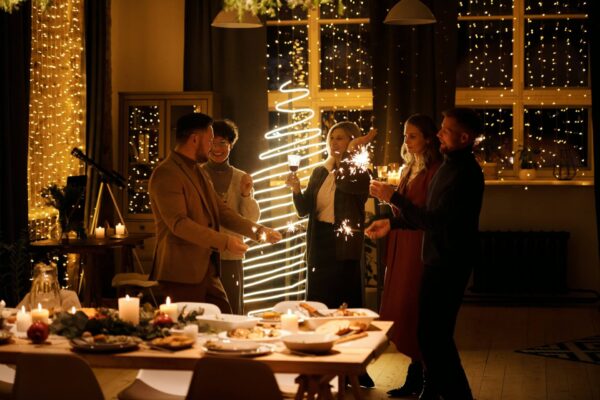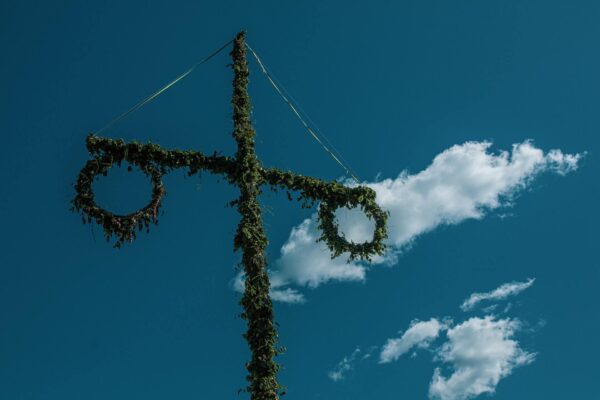It is the Swedish public holiday par excellence: Midsummer. Maypoles, flower crowns, dancing, good food and many hours of sunshine ensure a good atmosphere in Sweden, while large bonfires are lit in neighbouring countries. Here you can find out when, why and how people celebrate Midsommar in Sweden, Juhannus in Finland and St John’s Eve in the other Scandinavian countries!
Midsummer: The most important questions
- When is Midsummer? In Sweden and Finland, Midsummer does not have a fixed date, but always falls on the Friday and Saturday between 19 and 25 June. In the other Scandinavian countries, it is traditionally celebrated on the evening of 23 June.
- Where is Midsummer celebrated? Midsummer is celebrated in all Scandinavian countries and the Baltic states. The biggest celebrations are in Sweden and Finland, with smaller celebrations in Norway, Denmark and Iceland.
- Why is Midsummer celebrated? Midsummer’s Eve is considered the shortest night of the year, even though it no longer falls exactly on the summer solstice. In ancient times, harvest festivals were celebrated on Midsummer in pagan cultures and the night was believed to have magical powers. 24 June is also the birthday of John the Baptist, an important figure in the Christian faith.
- How do you celebrate Midsummer? Midsummer is celebrated outdoors with family and friends. People eat, drink, dance and sing together. In Sweden, the Midsummer pole is erected and danced around. In Finland, Denmark and Norway, large bonfires are also lit.
When is Midsummer?
Traditionally, or according to the Julian calendar, 24 June is the day of the summer solstice (astrologically this takes place on 21 June). This day also had a special significance in Christianity because the high feast or birthday of John the Baptist was celebrated on it. In Sweden, Midsummer has no fixed date – the celebrations always begin on the Friday between 19 and 25 June. In 2024, for example, midsommerafton (Midsummer’s Eve) falls on 21 June. The actual Midsummer Day is then the following Saturday.

In Denmark and Norway, the celebrations always take place on the evening of 23 June, while in Finland – as in Sweden – the festival always falls on the weekend, namely on the Saturday between 20 and 26 June. However, the festivities here also begin on the previous Friday.
Midsummer is not always the shortest night of the year, but it is definitely one of the shortest. It stays light for a long time – especially the further north you go, as the sun never sets north of the Arctic Circle between May and July. The midnight sun with its mystical atmosphere invites you to sit together and celebrate for long periods of time and people in the northern countries in particular enjoy the many hours of sunshine.
| Year | Midsommarafton (Sweden) | Midsommar (Sweden) Juhannus (Finland) |
|---|---|---|
| 2024 | 21 June | 22 June |
| 2025 | 20 June | 21 June |
| 2026 | 19 June | 20 June |
| 2027 | 25 June | 26 June |
Midsummer in Sweden: Customs and traditions on Midsommar
In Sweden, Midsummer(midsommar) is the second most important festival of the year after Christmas and the absolute highlight of the summer. Due to the good weather, the day is spent outside with family and friends. Many city dwellers travel to the countryside for the weekend, which is why the cities are often very empty – shops and restaurants are also closed. Over the centuries, many customs and traditions have become established around Midsummer.
Singing and dancing around the midsummer pole
Midsommar is unthinkable without it: the midsummer pole (also known as maypole or midsummer tree), which is the centrepiece of the celebrations. In Swedish it is called midsommarstång or majstång – although the name sounds like the month, it has nothing to do with May. The name comes from the ancient verb maja, which means “to adorn with flowers”. And the name says it all, as the pole, which has local variations, is decorated with foliage and flowers everywhere.
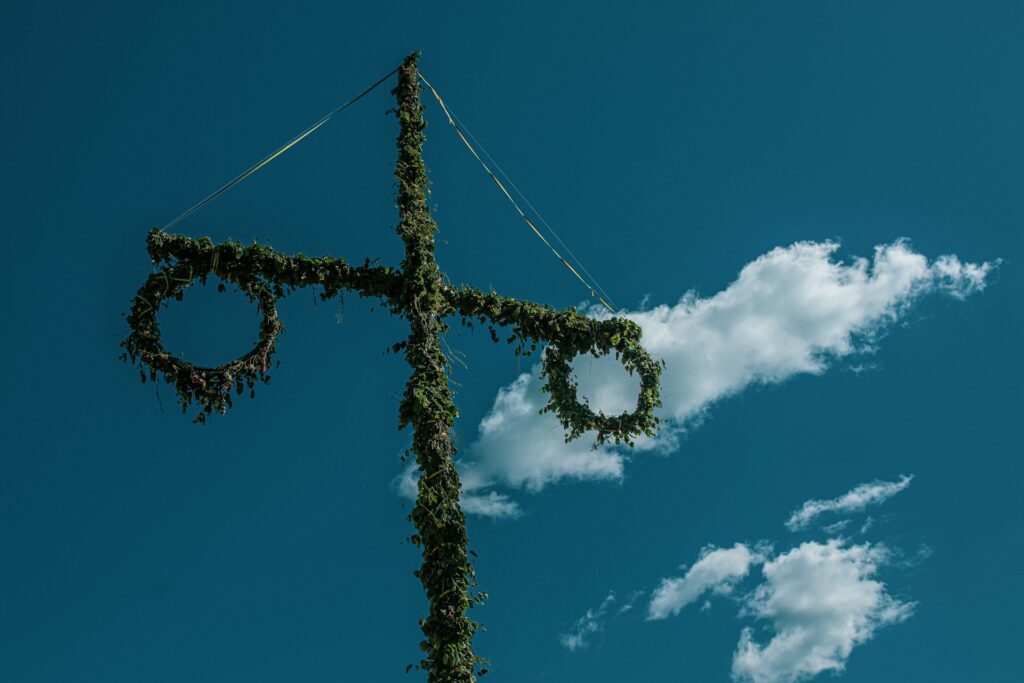
The pole is erected and decorated on Midsummer’s Eve. People then dance in a circle around the pole, singing songs and playing games. A Midsummer classic is the song Små grodorna (Little Frogs), in which the appearance and movements of frogs are imitated, which is why people do not run and dance around the pole, but rather hop.
Food and drink at midsummer
Good food and drink is the basis for a good Midsummer festival. There is a large and varied selection of hot and cold dishes. Traditionally, the first early potatoes are eaten on Midsommar, prepared with dill. This is accompanied by (pickled) herring, salmon and köttbullar, as well as crispbread, butter, sour cream and cheese. Smörgåstårta also often finds its place on the colourful buffet, and the barbecue is also frequently fired up.
Desserts are all about strawberries, whether fresh and with cream or made into a cake, such as the classic Jordgubstårta or Drömrulltårta. Hardly any other treat captures the flavour of summer so well.
Due to the high price of alcohol, Swedes tend to hold back on drinking in everyday life, but alcoholic drinks are often served at Midsummer, which are drunk with and after meals and as part of toasts and drinking songs. Beer and herbal schnapps are the most common drinks, with aquavit being particularly popular. For children and people who do not drink alcohol, there is elderflower syrup(flädersaft), other fruit juices and lemonades.
After the meal, people like to play – there is often a pentathlon, which consists of popular garden games such as sack races or egg races. Another favourite pastime is Kubb.
Clothing: Flower crowns and traditional costumes
The matching clothing is also floral, summery and airy. Wide dresses, especially in white or with a floral pattern, are particularly popular with women. Men often wear airy white or blue shirts. Traditional costumes are also frequently worn. Self-braided flower wreaths are worn in the hair to match.
The importance of Midsommar is also reflected in the presence of the Swedish flag. This is not only used as a decorative element and is often represented in the clothing worn by the colours blue and yellow, but also remains hoisted throughout the night.
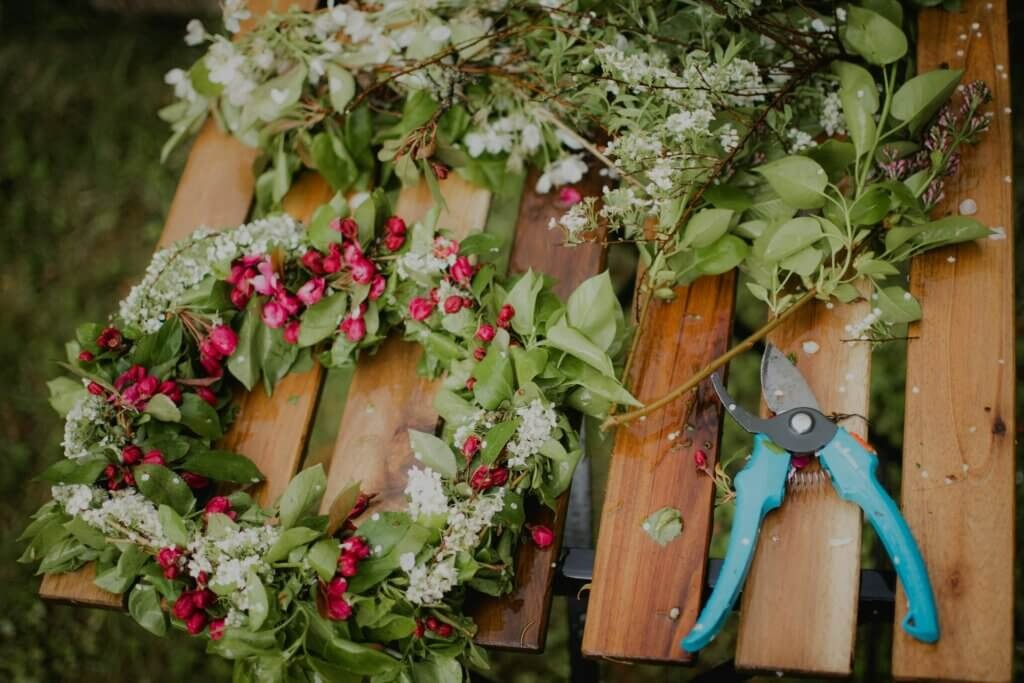
Myths and legends on Midsommar: Healing nature and seven flowers
Midsommar is a non-Christian festival in Sweden and is based more on pagan legends and customs. It is not only a celebration of summer and the sun, but also of love, good harvests and fertility.
In ancient times, it was believed that Midsummer Night brought magic to nature and that elves and trolls roamed the forests. The morning dew is also said to have healing powers – even today there is a custom of going for a walk barefoot in the morning, as this is said to promote good health. In the past, the dew was also collected and used in cooking and baking.
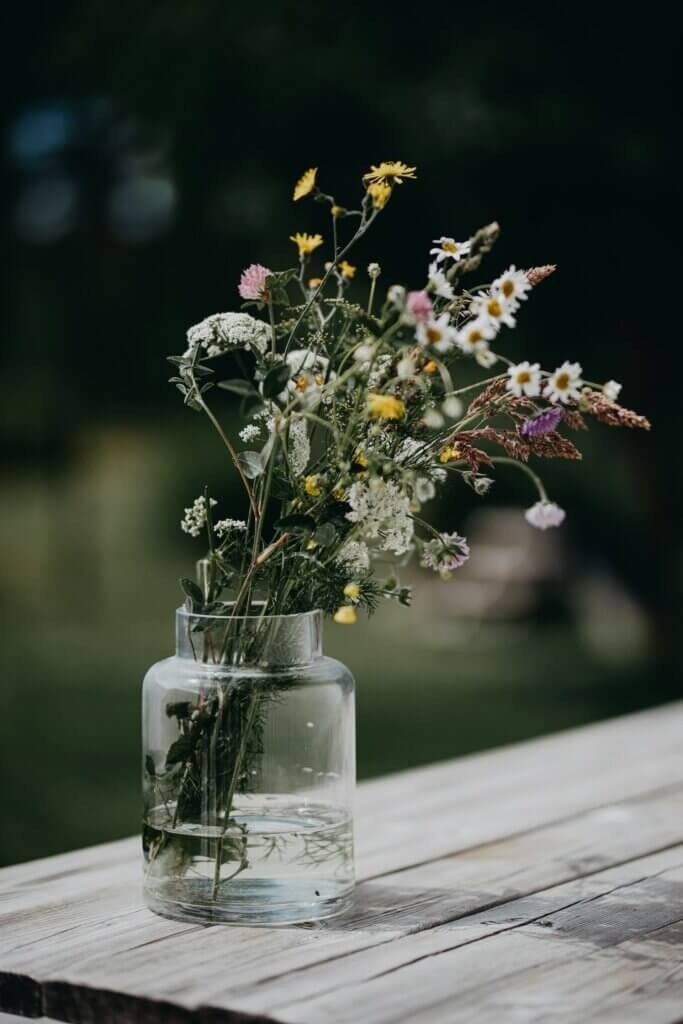
Another well-known myth revolves around flowers. It says that single women should pick seven different wildflowers from seven meadows in absolute silence on Midsummer’s Eve. If these are placed under the pillow, the future husband is said to appear in a dream – but the lucky man must not be revealed, otherwise the dream will not come true.
Anyone familiar with Astrid Lindgren‘s Six Bullerby Children will probably also know the water spirit Näck, who roams the streams and rivers of Sweden at midsummer and who pretends to be Lasse in the third volume in order to play a trick on the other children. He lures his unwitting victims to their deaths by playing the violin – which is why bathing and swimming should be avoided on Midsommar!
Large public Midsummer celebrations in Sweden
In addition to private celebrations, there are also numerous public Midsummer festivals in Sweden, to which tourists are also invited. People picnic, dance and celebrate together in parks and other public facilities. Highlights include the erection of the midsummer tree, parades and live music.
One of the best-known Midsummer festivals in Sweden is the festival at the Skansen open-air museum in Stockholm. The large museum offers a traditional Midsummer with all kinds of typical dishes, dances and other activities in an unrivalled atmosphere.
The largest Midsummer festival in the world takes place in Dalarna in central Sweden. Up to 30,000 revellers gather in Sammilsdal, a natural amphitheatre on Lake Siljan in Leksand. This is also where Sweden’s largest maypole is erected, which is an impressive 24.5 metres tall and is also known as the “Midsummer pole of Sweden”. There is also a three-day festival where many Swedish artists perform from Thursday to Saturday.
Midsummer festivals are also held in many other public places throughout Sweden, for example in Slottsskogen in Gothenburg, in the medieval town of Visby on Gotland, in the open-air museums in Lund and Helsingborg or in or around the numerous castles and manor houses in southern Sweden. Further tips can be found at Visit Sweden.
Midsummer in the other Nordic countries
Midsummer in Finland: Juhannus
In Finland, Midsummer is called Juhannus and, as in Sweden, is one of the most important festivities of the year, if not the most important. Since 1955, it has therefore always been celebrated at the weekend so that as many people as possible can take part. Midsummer Day is also the day of the Finnish flag, which is why it is allowed to remain hoisted throughout the night.
The origins of Juhannus, which despite its name has nothing to do with Christian festivals, lie in the pagan festivals Vakkajuhla (Basket Festival) and Ukon juhla (Festival of Ukko). The harvest god Ukko was celebrated here, in whose honour people came together to eat and drink. These festivals also gave rise to the tradition of being as loud as possible on Juhannus to drive away bad spirits – according to legend, the louder you were and the more you drank, the better the harvest would be.
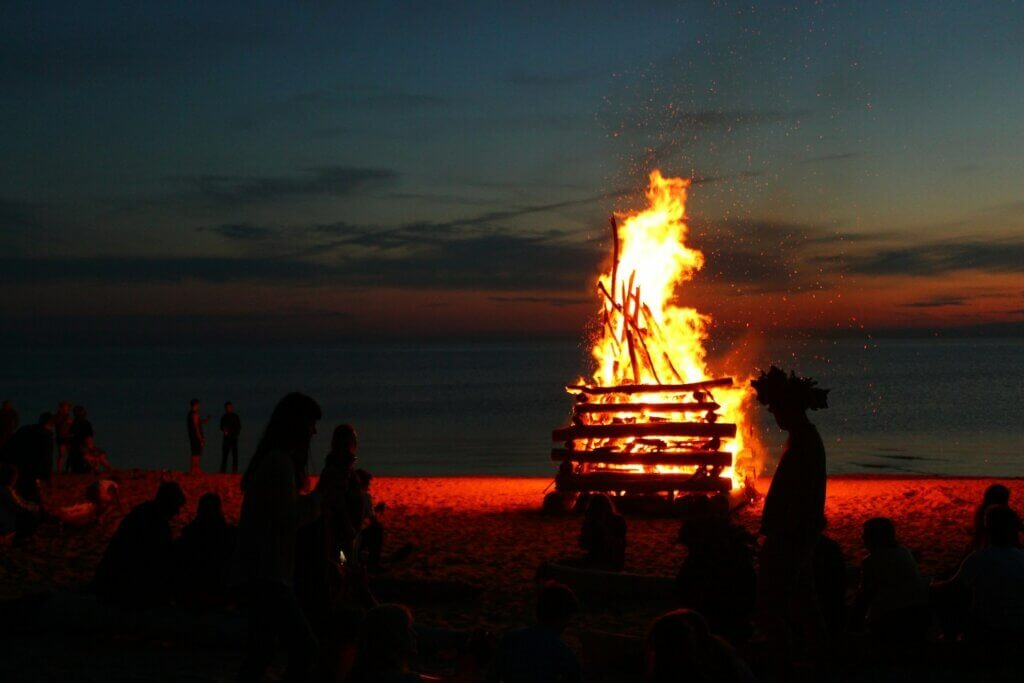
The Finns also celebrate Midsummer mainly in the countryside and by the water. Large fires are lit there (Finnish: juhannuskokko). The fires often create a mystical atmosphere, especially in the archipelago and shore areas – no wonder, as legend has it that trolls, fairies and elves are also out and about in the Finnish forests on Midsummer’s Eve. Houses are decorated with birch boughs and flowers, and in the Swedish-speaking areas in the west you may also find a maypole.
There is also singing and dancing. There are also many concerts and festivals, for example on the Seurasaari museum island in Helsinki. A visit to the sauna is also a must, and people often go swimming together at the end of Midsummer Night. Barbecues, fishing and boat trips are also popular.
Norwegian midsummer: Sankthans
In Norway, Midsummer is celebrated on St John’s Eve, 23 June. In contrast to Sweden, it is based on Christian tradition and the birthday of John the Baptist. This is where the name Sankthans comes from. The festival is not as big and important as in Sweden – also because it can fall on a weekday – but there are festivities and customs held throughout Norway.
Traditionally, there are bonfires of all sizes throughout the country – from small to huge. Family and friends gather around the campfires and eat: Sausages are grilled in a cosy atmosphere and eaten with potato salad and potato pancakes. As in Sweden, there is also herring, salmon and bread. Another speciality that is often eaten with Sankthans is rømmegrøt, a porridge made from sour cream, flour, milk and butter, served with cinnamon, sugar and sultanas. Beer and aquavit are also drunk.
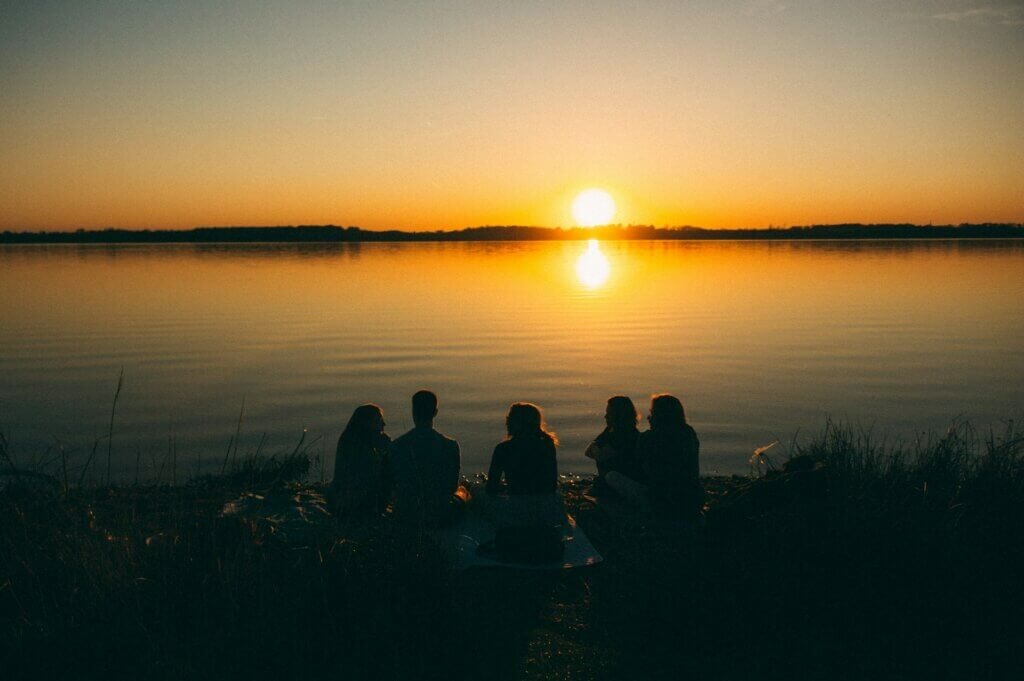
People not only sing privately, but also at concerts throughout Norway. Similar to Sweden, Norwegian open-air museums also organise Midsummer celebrations, such as the Norsk Folkemuseum in Oslo, which is a particular highlight for families.
Midsummer in Denmark: Sankt Hans
As in Norway, Midsummer is also celebrated in Denmark as Sankt Hans on the evening of 23 June. Large bonfires are also left over here, but with an extra twist: a straw witch is burnt on the Sankt Hans bål to drive away evil spirits and demons.
Before the fire is lit, a local personality, such as a politician, gives a speech. The song Midsommervisen by Holger Drachmann is then sung. Sausages and bread are eaten and there are often concerts. In addition to the bonfires, which usually take place on the coast and on the beach, there are also torchlight and lantern parades.
In addition to celebrations on the beach, garden parties are also common. People barbecue, drink, sing and even do handicrafts – witches are also very popular as decorations. There are also events in parks and museums, such as Copenhagen‘s Tivoli and Bakken theme parks.
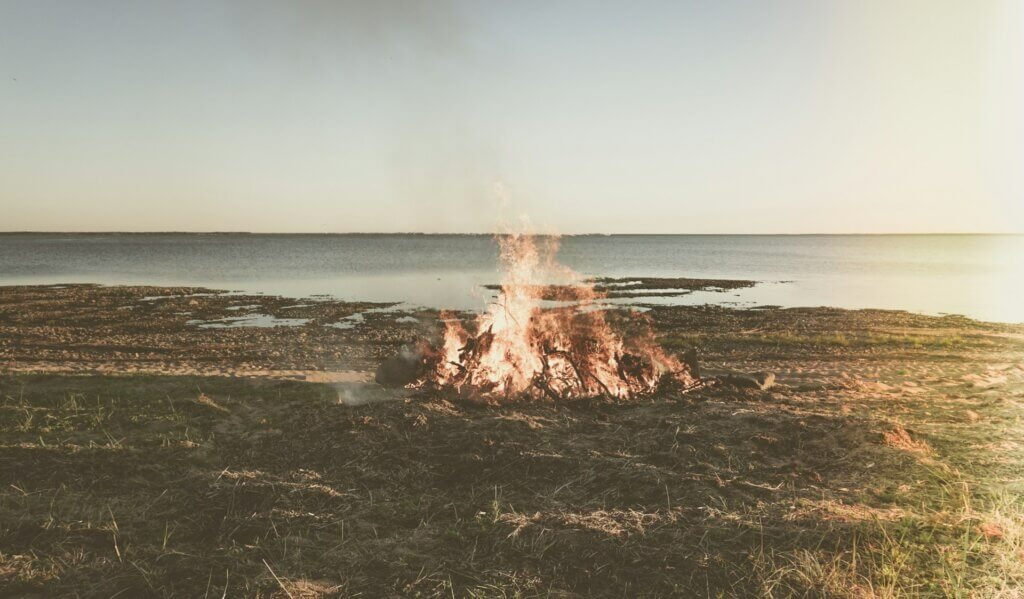
Midsummer in Iceland: Jónsmessa
Iceland is all about the midnight sun in June. As in Norway and Denmark, Jónsmessa is celebrated on the night of 23rd to 24th June, but there are no big celebrations.
The night is considered one of the four most magical nights of the year (alongside Christmas Eve, New Year’s Eve and þrettándinn, which is on 6 January and marks the end of the Christmas season) – according to Icelandic folklore, this means that cows can talk to people, seals turn into people, dreams come true, medicinal herbs are particularly powerful and dew has healing effects. You can also meet elves: All you have to do is sit at a crossroads with four paths that all lead to churches and the magical creatures should appear.
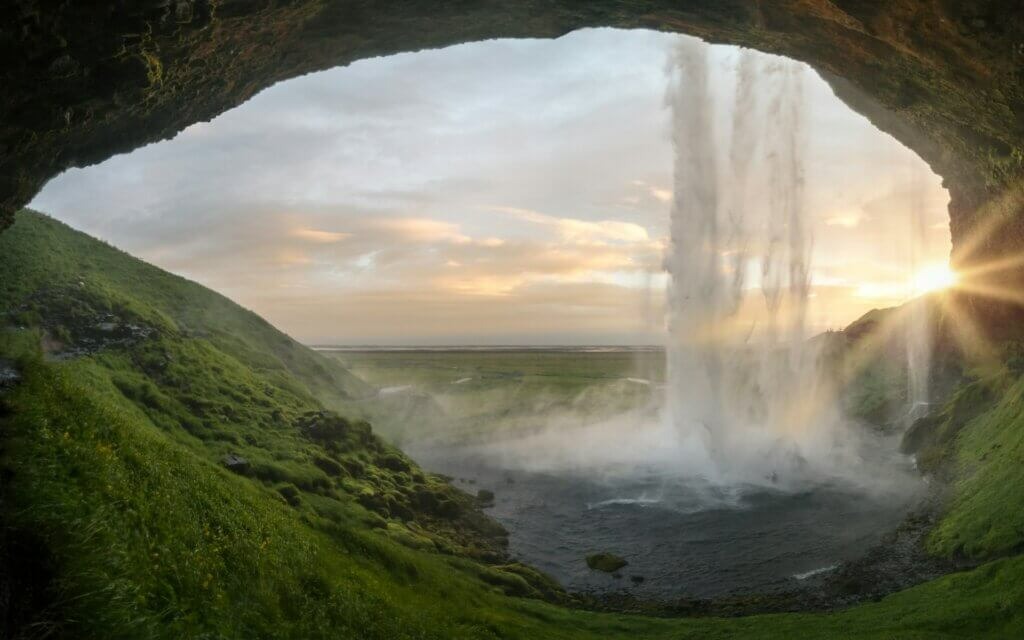
Midsummer in media: thrillers, films and more
Due to the high profile, folkloric origins and mystical aura of Midsummer, the holiday is often used as a plot time in books or films, usually thrillers, romances or fantasy. Characters from Astrid Lindgren’s stories also celebrate Midsummer, for example the The Six Bullerby Children or the inhabitants of Seacrow Island.
The US-Swedish horror film Midsommar from 2019, in which a group of tourists in Sweden fall into the clutches of a cult, also received a great deal of international attention.
